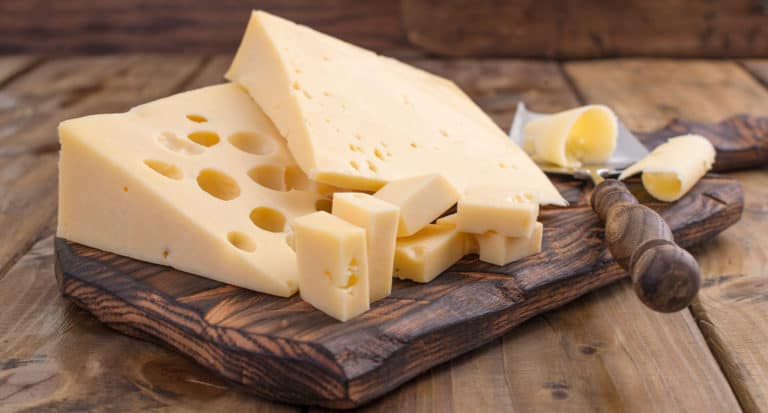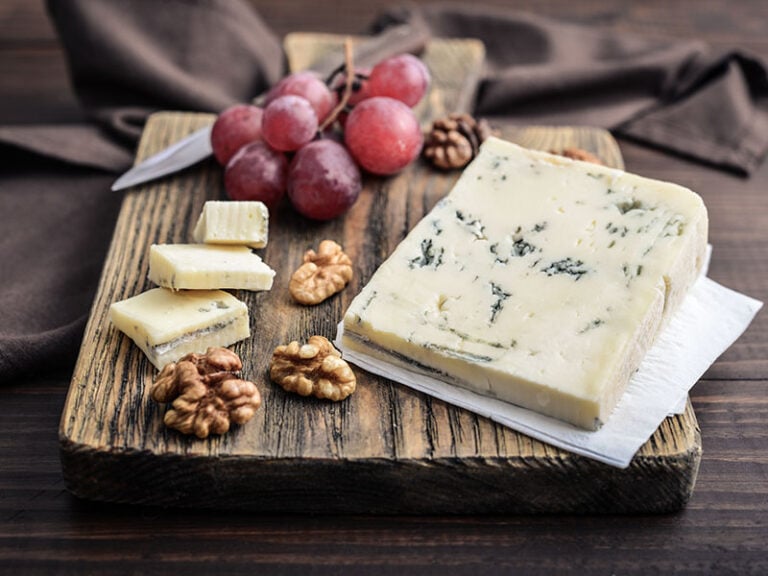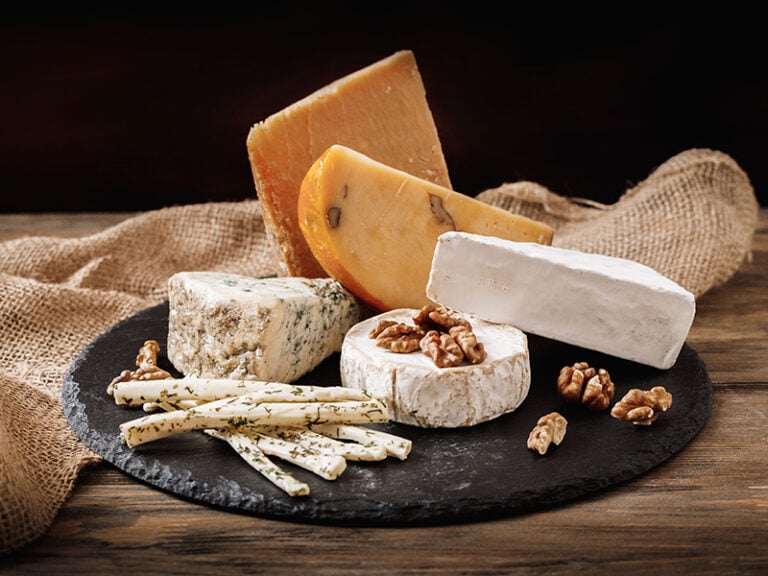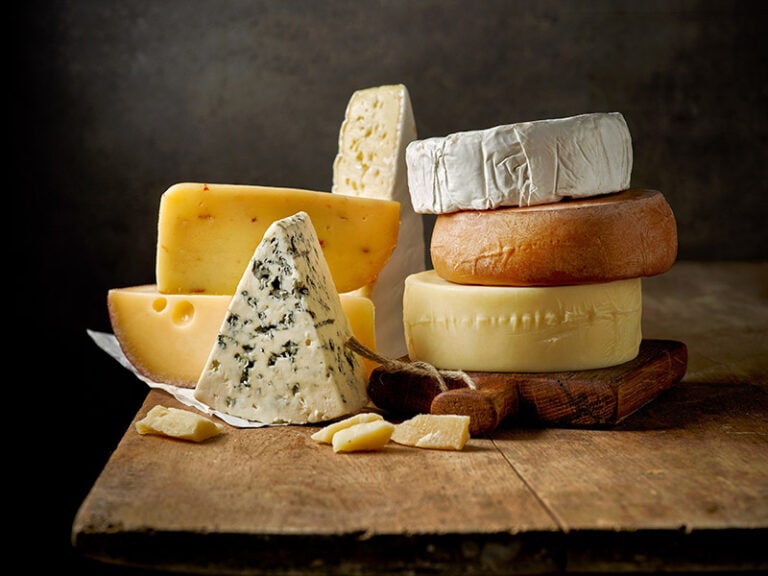When it comes to Oaxaca cheese substitutes, I always think of Mozzarella. However, many other excellent kinds of cheese work well in Mexican dishes in place of Oaxaca. Therefore, don’t limit your choices by learning more about Oaxaca substitutes.
In order to know about Oaxaca cheese substitutes, this article will give a detailed explanation for each type of alternative one. Therefore, let’s be ready to find out the best Oaxaca cheese substitute to bring home.
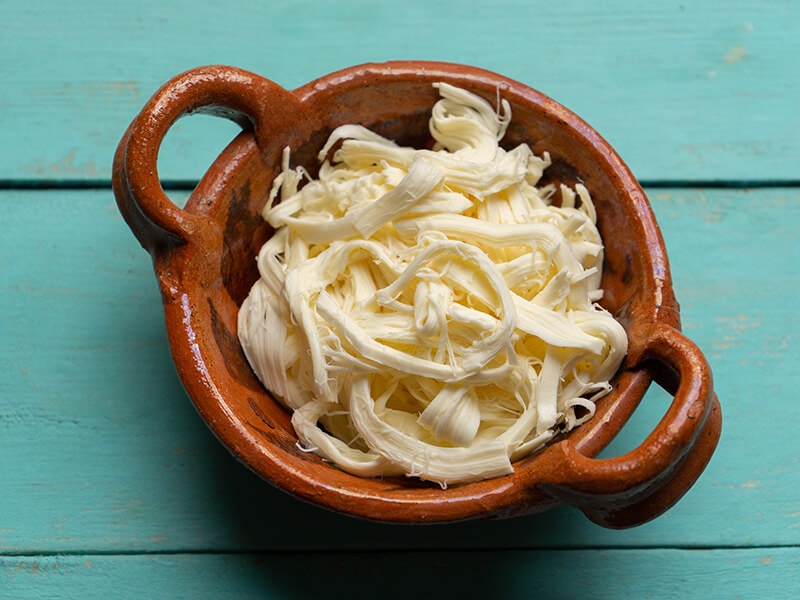
What Is Oaxaca Cheese?
Oaxaca cheese, or Quesillo (rope cheese), is a fresh, semi-soft cow’s milk cheese from the Oaxaca state of Mexico. It is a famous cheese with a mellow buttery flavor and slightly salty taste. Similar to Mozzarella, this cheese is white and has a stretchy texture.
In 1885, a teenager named Leobarda Castellanos, who lived in Reyes Etla, created Oaxaca accidentally. However, its making method, called pasta filata, came to Mexico in the early 1500s along with the Dominican friar.
Following the pasta filata method, Oaxaca cheese is made by kneading the curd in hot water, then pulling it into thin strips in salted water. After that, cheesemakers will braid the strips together to form the signature ball of yarn.
Typically you can tear the cheese into thin strands as a topping. Oaxaca is also a good melted cheese, usually added to Mexican cuisines, such as enchiladas, nachos, and quesadillas.
Making Oaxaca cheese could be the most exciting activity.
Oaxaca Cheese Substitutes You Should Know
While you can find Oaxaca cheese in supermarkets or Mexican specialty stores, it is not hurt to learn about its substitutes. Therefore, look at the table below to overview the alternatives and their flavor.
Mexican Substitutes For Oaxaca Cheese
Since Oaxaca originated in Mexico, you can consider replacing it with another Mexican cheese. Below are seven popular cheese varieties in Mexico that are similar in flavor and texture to Oaxaca, so you can interchange them in many dishes.
1. Manchego (Mexican)
While the Spanish use Manchego sheep’s milk in cheese production, the Mexicans love to use cow’s milk. Despite the difference in milk sources, Manchego cheese will take 60 days to 2 years to age.
Due to the aging process, Manchego develops its natural yellow rind and white color interior. Unlike the Spanish version, Mexican Manchego is mass-produced and sold widely.
Usually, Mexican Manchego is served in cubes, sliced, or shredded. This cheese has a creamy texture and mild, nutty flavor that can replace Oaxaca in many recipes that require melting the cheese.
You can use Manchego in many ways, such as stuffing it into quesadillas, melting over nachos, or having it raw as a snack.
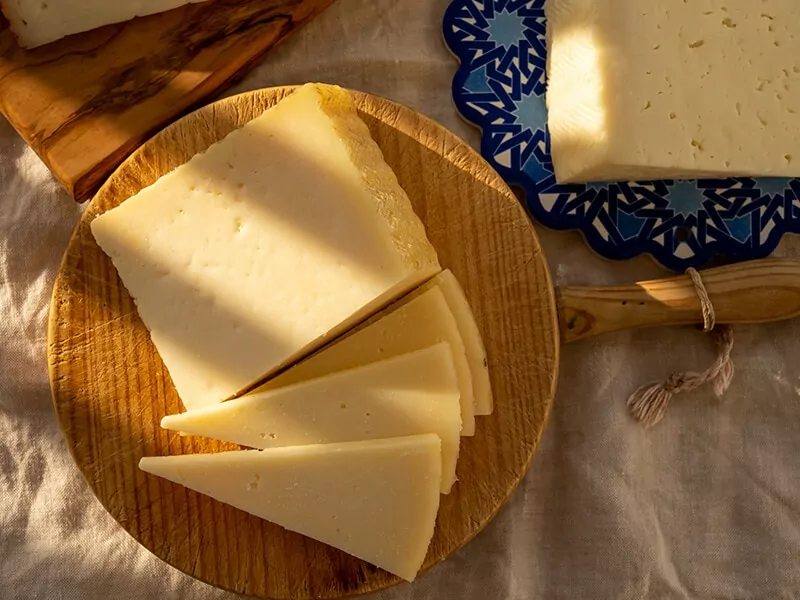
2. Chihuahua Cheese
Chihuahua is another Mexican cheese made in the state of Chihuahua. The other name of Chihuahua is queso Menonita. It is also a popular cheese in Mexico, along with Asadero and Oaxaca; it is available in braids, balls, or round shapes.
This cheese is made from cow’s milk with a pale yellow color. Unlike other fresh cheeses, Chihuahua is firm outside and semi-soft interior. Similar to Oaxaca, Chihuahua has a mild and salty flavor. When it is aged, its flavor sharpens as cheddar, with a nutty note.
Besides, Chihuahuas also have a good melting ability. When it is hot, Chihuahuas produce a creamy layer that helps balance the spicy taste in Mexican dishes. For that reason, you can find Chihuahuas in nachos, quesadillas, and chili con queso.
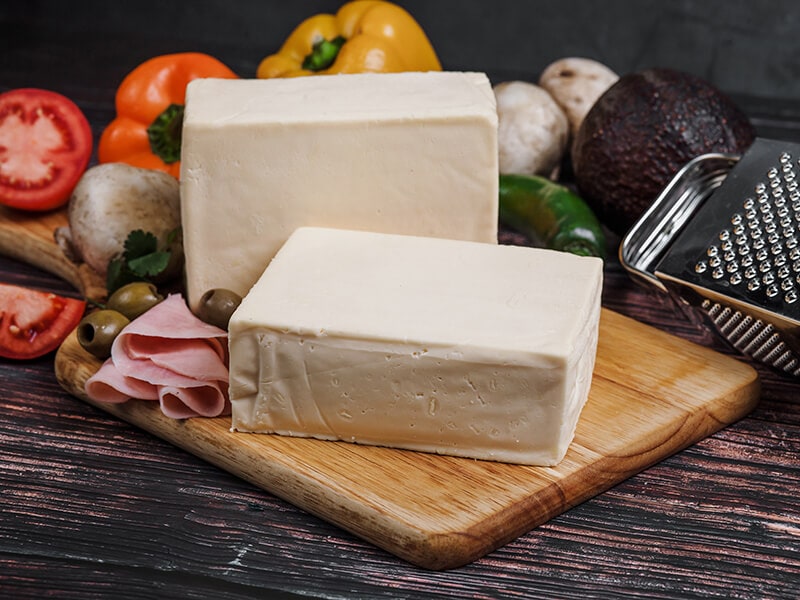
3. Panela Cheese
Panela cheese originated in the Balkan peninsula or the Mezzogiorno of Mexico. Mexicans love to use pasteurized and skimmed cow’s milk for making Panela. Since this cheese uses baskets to mold, it has another name called queso canasta, which translates as basket cheese.
Panela is another white, soft, and fresh cheese famous around Mexico nowadays. It is smooth, similar to Indian paneer, and gluten-free. Since the cheese has lower fat content than the others, Panela doesn’t melt well for dishes that need stringy cheese.
Even so, Panela shares the same profile flavor as Oaxaca. It has a crumbly and creamy texture with a mild, milky flavor. You can replace Oaxaca with Panela for tossed salad or tostadas.
Furthermore, since Panela doesn’t melt when heated, it can absorb flavor well and usually goes well with spicy foods. This cheese is nice to have alone as fried cheese, but you can have it as a part of the appetizer dishes such as nopal salads.
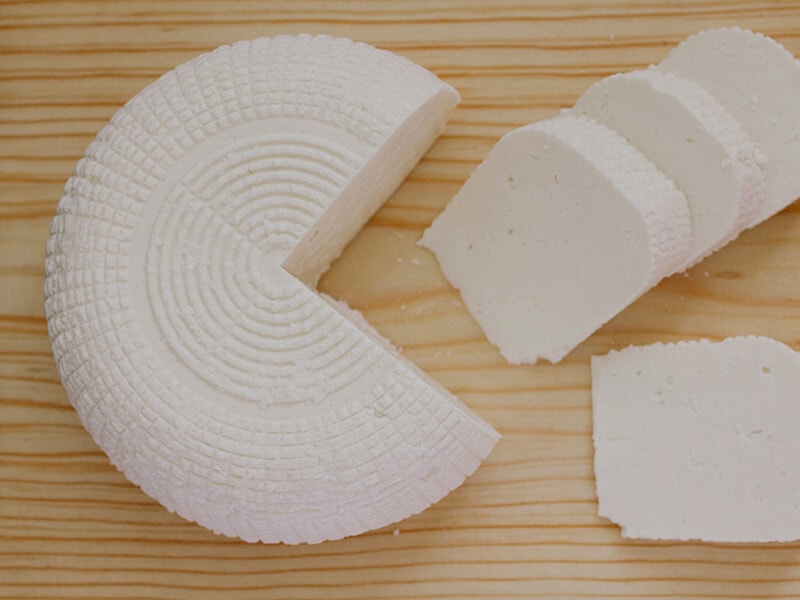
4. Asadero Cheese
Asadero cheese is a close cousin of Oaxaca. The raw source of this cheese is cow’s milk (usually unpasteurized) from Northern Mexico. Aside from Oaxaca, Dominican monks introduced Asadero to Mexico to replace traditional Mozzarella.
Therefore, Asadero and Oaxaca share many similarities in terms of flavor and texture. Asadero is a mild, semi-soft cheese with white or pale yellow color. Sometimes you can find the cheese is twisted, similar to Oaxaca, but usually, it has a round or block shape.
Oaxaca and Asadero share the same taste of mild, fresh, and a bit tangy. However, their texture is slightly different. Since Asadero uses its whey instead of hot water like Oaxaca, Asdero is drier than Oaxaca.
Let’s discover the process of making Asadero cheese at home.
5. Queso Fresco
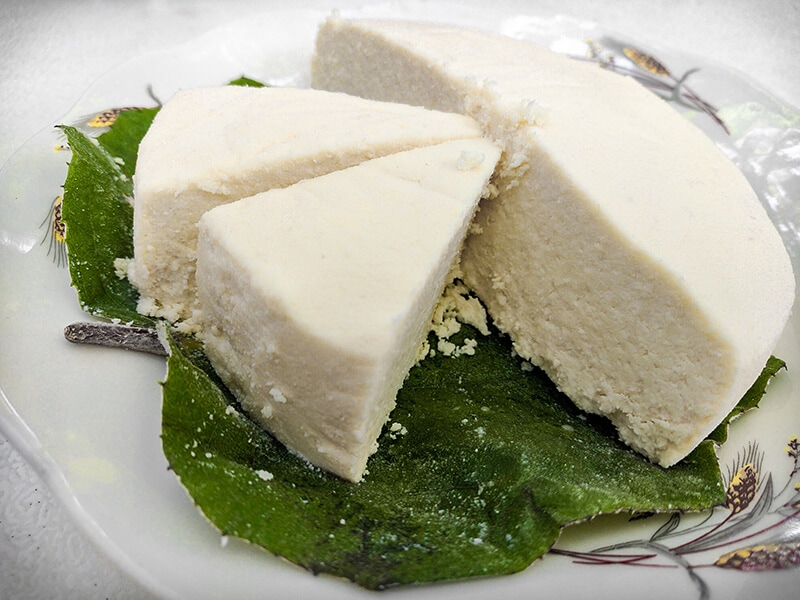
Queso Fresco, or fresh cheese, is a soft, unaged Mexican cheese with white color. Usually, people make the cheese by combining cow’s and goat’s milk with an acid like vinegar or lemon juice (replacing rennet) to make a crumble texture.
In terms of flavor, Fresco tastes fresh, mild, and milky similar to Oaxaca. Therefore, you can find Fresco in many Mexican or Latin American cuisines. However, the cheese doesn’t melt well, so you should refrain from using it in hot dishes.
Instead, you can use Fresco to substitute Oaxaca in cold dishes, such as crumbled on top of salads and tostadas. A variant of Queso Fresco is Queso Blanco (white cheese), made only from cow’s milk. So, the Blanco version is also an opinion to replace Oaxaca.
In short, Queso Fresco is a good option to replace Oaxaca, but you need to place it in suitable recipes. Not hot, just cold.
Since the cheese uses acid-like vinegar for curdling, you can easily make Fresco at home.
6. Queso Requeson
Queso Requeson, or Requesón Cheese, is a type of fresh cheese popular in Mexico and Spain. This cheese has white color and a grainy texture. Usually, Queso Requeson uses pasteurized milk, vinegar, or another acid for curdling, similar to Fresco.
However, Requenson has a bit of a salty flavor rather than Fresco. This cheese has a signature mildly sweet and creamy taste, similar to Ricotta. Since it is soft and spreadable cheese, you can serve Requeson as an appetizer spread instead of for Oaxaca.
Queso Requeson is popular in Mexican shops. If you find any Oaxaca in a special Mexican goods store, you can try Requeson.
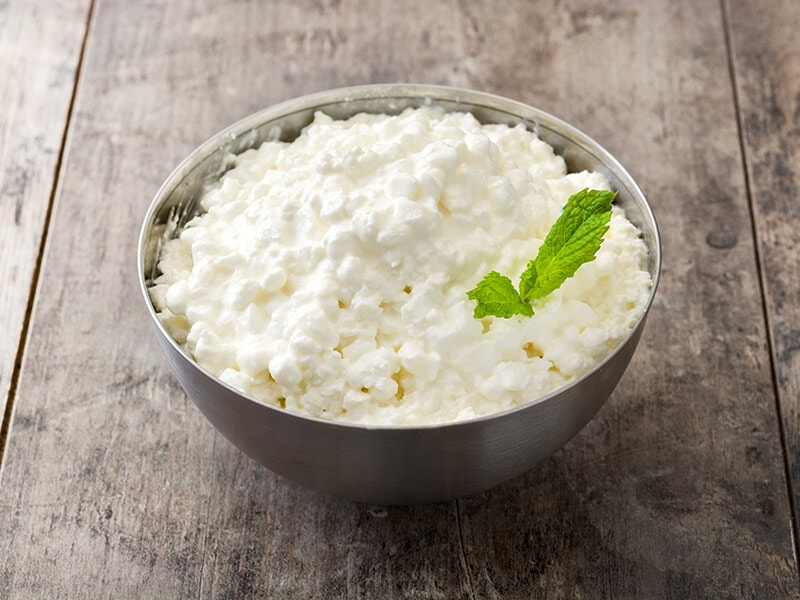
7. Cotija Cheese
Cotija is a typical Mexican cheese. It took its name after the town Cotija Michoacán and used cow’s milk as raw material. The cheese has white color and a crumbly texture. Traditionally, Cotija usually ages from 100 days to 12 months.
The taste of Cotija is versatile. When the cheese is young, it tastes similar to feta. However, the matured version will develop a salty, sharp, and tang flavor. Cotija replaces Oaxaca in many recipes since it has a nice crumble, perfect for topping on tacos or salads.
You can easily find this cheese at all stores or supermarkets in Mexico. Therefore, if your dish asks for grating, you can consider replacing Oaxaca with Cotija.
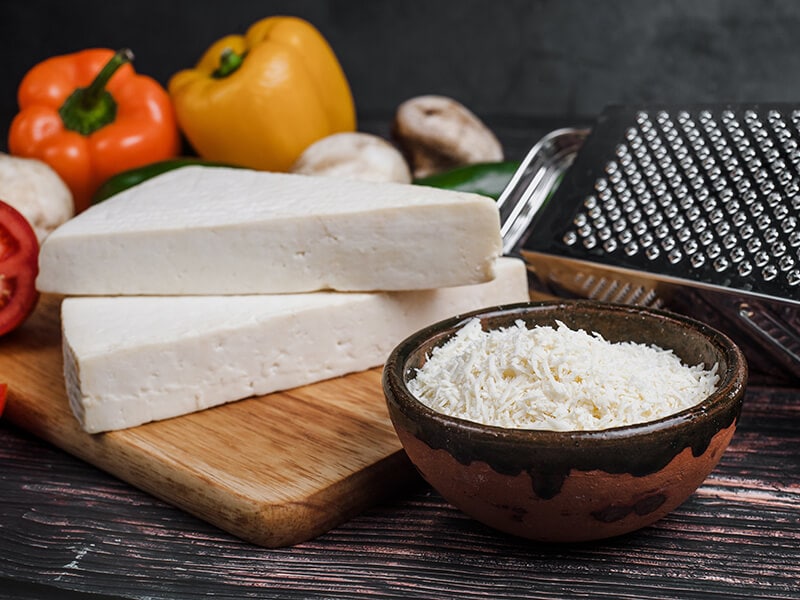
Other Substitutes For Oaxaca Cheese
Instead of Mexican cheese, there are many other options that you can go to replace Oaxaca cheese. They are similar to Oaxaca in terms of flavor and melt-ability and are easier to find than Oaxaca cheese.
8. Cheese Curds
While many types of cheese require a considerable maturing period to ripen, cheese curds do not. Cheese curds are typically prepared from cheddar or other cheese varieties such as Muenster and Colby. This cheese is fresh and has a mild flavor with a cheddar note.
These cheese curds are a common item in the Midwest, where they are a snack in most bars. The curds are white-yellow, cut into little pieces, and beloved for their distinct squeak when biting. Cheese curds can be white, yellow, or orange.
In place of Oaxaca, cheese curds share the same semi-soft texture with high moisture content. The same mild flavor allows curds to replace Oaxaca cheese in enchiladas, casseroles, or lasagna.
However, unlike Oaxaca, you cannot shred or grate curds. It is preferable to slice the curds into little pieces before serving. Furthermore, cheese curds are good at retaining heat but can produce mushy and gooey cheese.
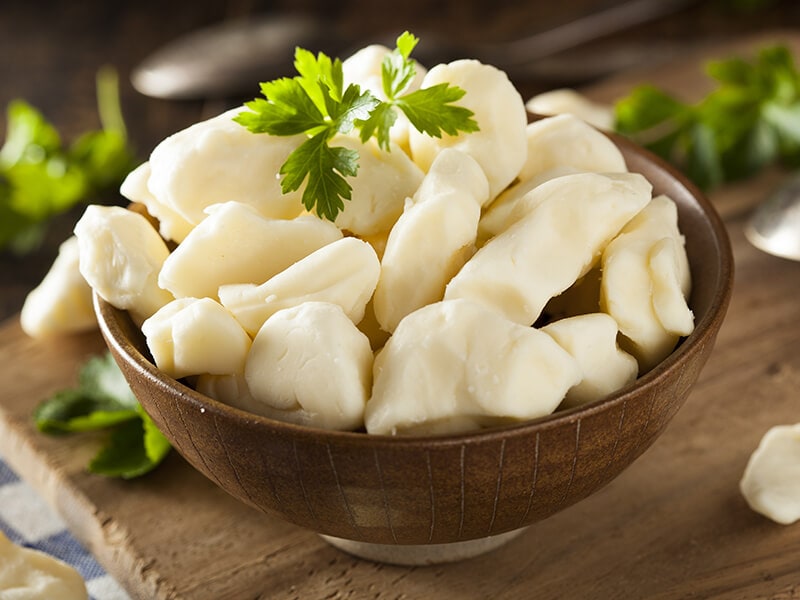
9. Monterey Jack Cheese
Monterey Jack cheese, or Jack cheese, is an American cheese born in California in the 18th century. This cheese is named after businessman David Jacks, who first sold this cheese commercially.
Jack cheese is a semi-hard cheese made from cow’s milk and has ivory-white color. It took Monterey Jack cheese from 1 to 6 months to age. The young version of Jack cheese tastes a bit stronger than Oaxaca, while the aged version has a signature mild and earthy flavor.
Because the cheese has a similar flavor to Oaxaca, you may use it in a salad as a cube or slice it for sandwiches. Although you can’t shred Jack cheese into thin strings like Oaxaca, it is another fantastic melted cheese that can go with nachos or pasta.
Furthermore, Monterey Jack cheese is widely accessible in supermarkets in the United States and Canada. As a result, you may easily substitute Monterey Jack cheese for Oaxaca in many recipes.
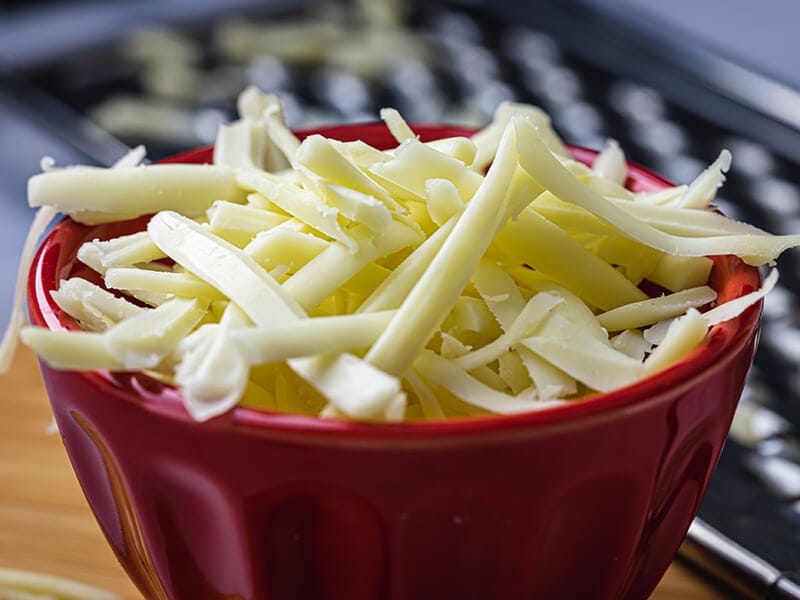
10. Mozzarella
Mozzarella is the most popular cheese of many families, first produced in the Southern Italian region of Campania. Unlike most other types of cheese, traditional Mozzarella is mainly made from buffalo’s milk, giving a distinct flavor.
The typical version of Mozzarella can be made with cow’s milk (fiordilatte) popular in many dairy shops and supermarkets. Mozzarella is typically made by the pasta filata, giving the strings an elastic texture. Interestingly, Oaxaca is a dried version of Mozzarella.
Due to the close relationship of mild and salty flavor, semi-soft in form, and white color, you can replace Oaxaca and Mozzarella in many recipes. You can pair Mozzarella with freshly picked basil and tomatoes or have it in lasagna or enchiladas.
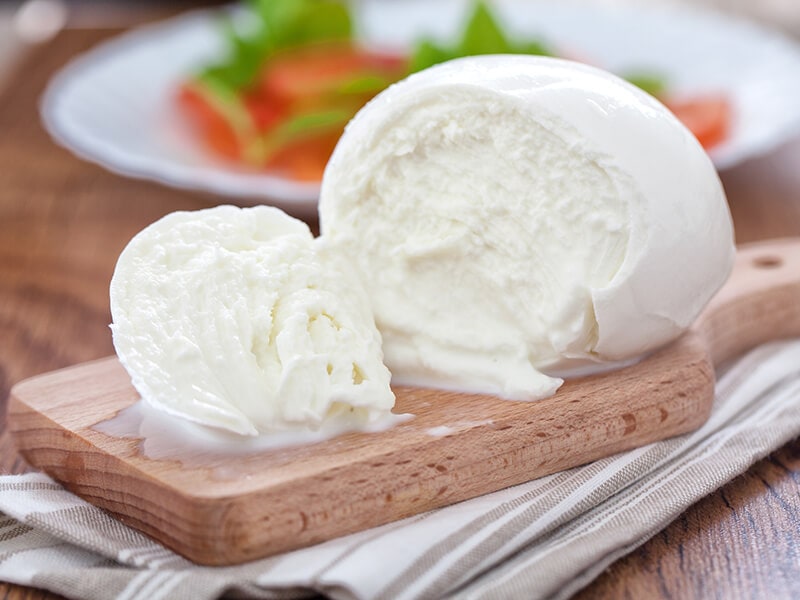
11. Muenster Cheese
Muenster is another semi-soft American cheese made from cow’s milk. You can easily recognize this cheese by its orange-red rind and criss-cross pattern on the rind.
The signature color of Muenster comes from annatto, a seasoning that helps develop Muenster’s flavor. Besides, annatto brings great health benefits, such as antioxidant capacities and cancer prevention. (1)
Similar to Oaxaca, many people fall in love with the Muenster flavor. Its melt ability with nutty, buttery flavor is the feature that distinguishes the cheese. Furthermore, people love Muenster since it makes the dish creamier and tastier.
You can substitute Oaxaca with Muenster since the cheese can go well in any form. Except for spinning, you can absolutely slice, cube, or grate Muenster for many appetizer dishes such as sandwiches, quesadillas, or salads.
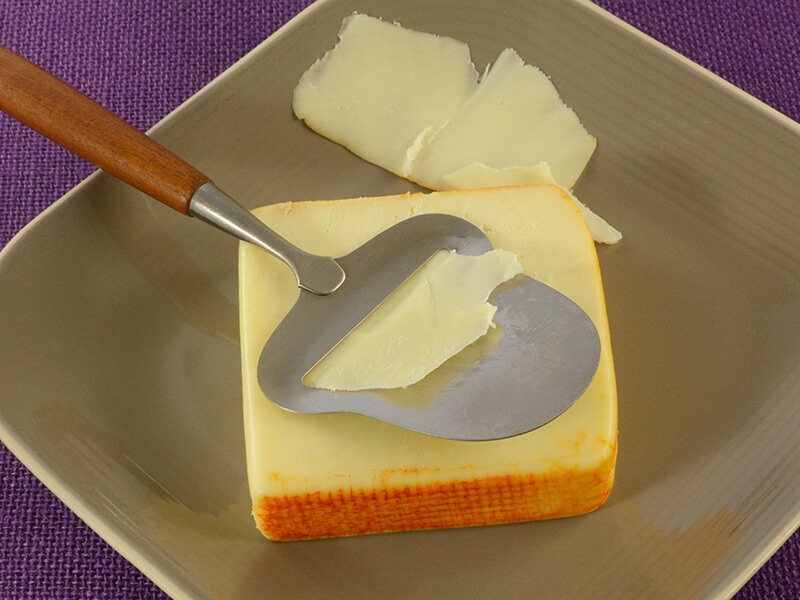
12. String Cheese
When you are looking for a cheese snack, string cheese is a good option you can go with. String cheese is a typical American cheese that looks like a white stick with a rubbery texture. This is a semi-hard cheese with similar moisture content to Oaxaca.
This cheese mainly consists of the same ingredients as Mozzarella or cheddar. Therefore, it has a mild and salty taste as these two kinds of cheese. Besides, string cheese is a perfect alternative when your recipes call for Oaxaca cheese.
Sting cheese’s versatility is undeniable when you can grate, shred, or cut it into cubes, depending on your cooking purpose. Overall, this cheese is very popular in stores or supermarkets.
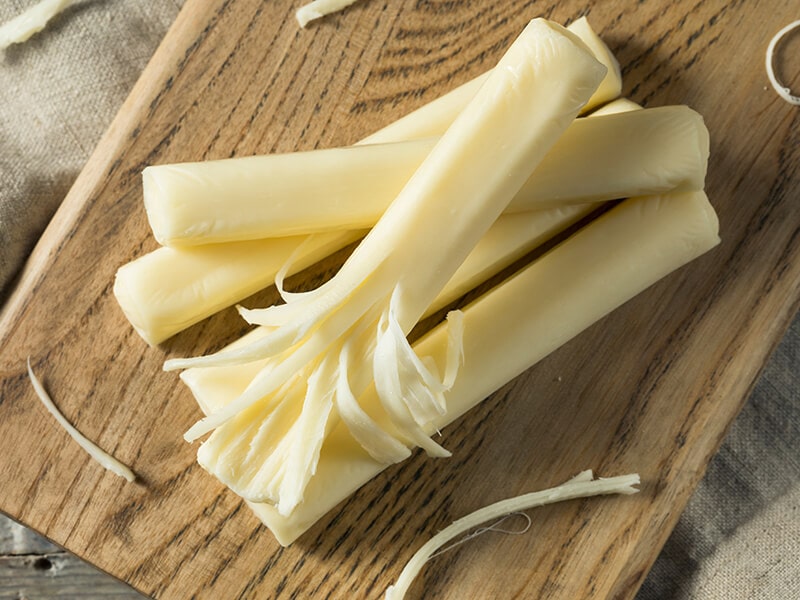
13. Ricotta Salata
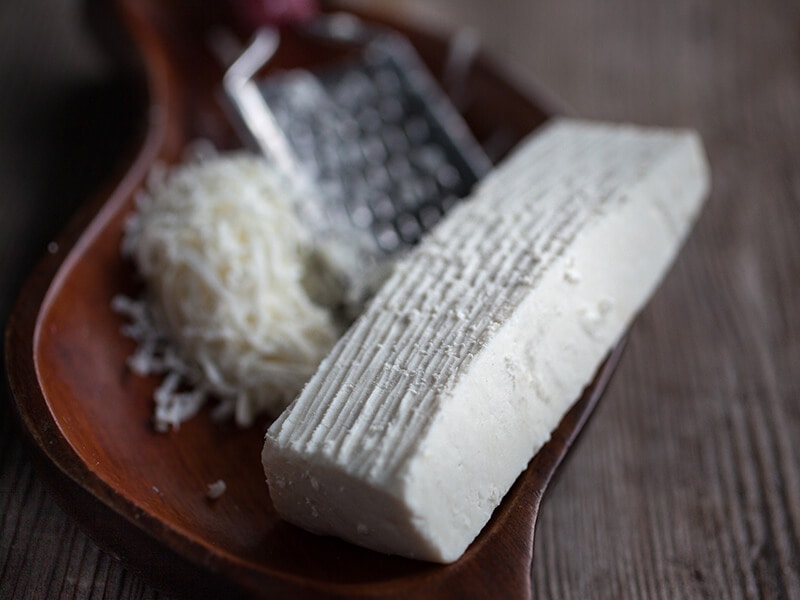
Ricotta is an Italian cheese that is as fluffy as a cloud. Since Ricotta in Italian means recooked, this cheese is also called whey cheese. While most cheese is made from curd, Ricotta uses a tiny remaining curd in the whey, making it unique.
You can make Ricotta with various types of milk, such as goat, cow, or buffalo milk. Although Ricotta is a fresh cheese, it still needs an aging process for at least 90 days (2). Hence, the cheese can have a milky-white and crumbling texture.
Ricotta Salata has a great moisture content in it. However, the moisture will go as the cheese ages. About the flavor, Ricotta shares the same profile flavor as Oaxaca since it also tastes mildly salty and earthy.
As a result, when making enchiladas, stuffed chiles, or taquitos, you can use Ricotta Salata to substitute with Oaxaca. Besides, this cheese also helps your egg dishes and casseroles enhance flavor.
Let’s learn how Italians produce their Ricotta Salata.
FAQs
Now, you don’t need to worry about Oaxaca since you have more than ten substitute options. However, you should learn more about these commonly asked questions to use them correctly. Let’s explore now!
There Are More Substitute Options For Oaxaca Than You Think
Although the taste of Oaxaca is memorable, you shouldn’t limit your choices to Mexican dishes. If you can’t find Oaxaca at the nearby shops, let’s give the other cheese a chance, new alternatives will surprise you with their impressive taste.
I hope this article will help you in expanding Oaxaca cheese substitutes. If you find this article useful, don’t forget to share it with your friends. Besides, leaving a comment about this topic is always welcome.
References
- Encyclopedia of Immigration and Migration in the American West Google Sch. Google.
- Madalozzo, E.S., Sauer, E. and Nagata, N. (2015) Determination of fat, protein and moisture in ricotta cheese by near infrared spectroscopy and multivariate calibration, Journal of food science and technology. U.S. National Library of Medicine.

